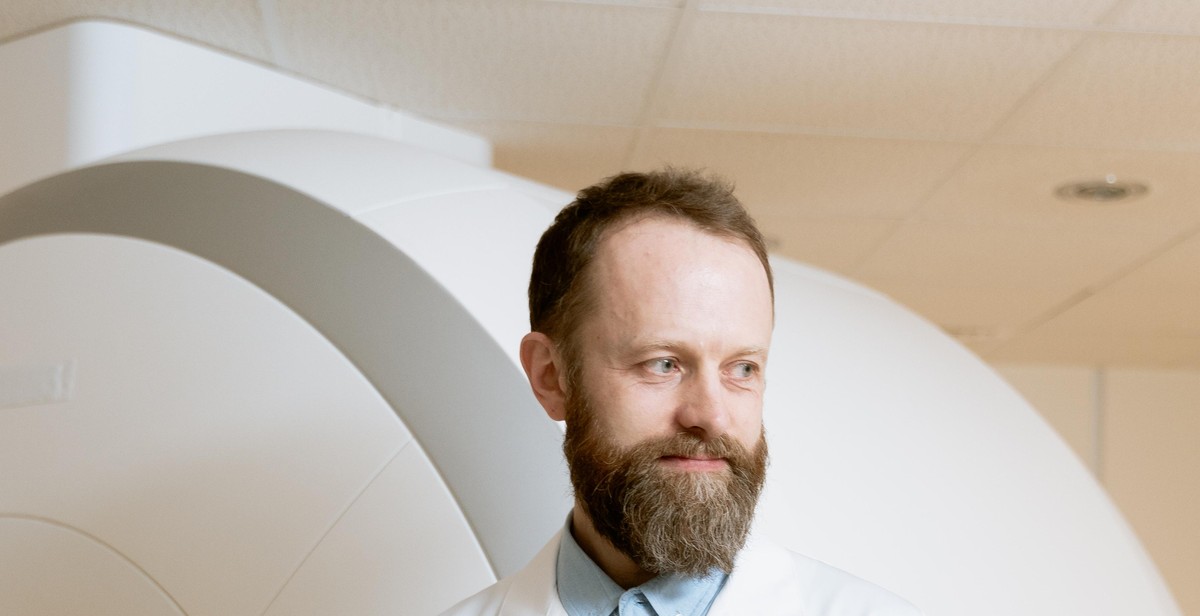Introduction
Artificial Intelligence (AI) has transformed the healthcare industry by improving the accuracy and speed of medical diagnosis, treatment, and research. One of the most significant advancements in this field is the development of medical bots. Medical bots are AI-powered software applications designed to perform various tasks, such as assisting doctors in their diagnosis, monitoring patients’ health, and providing personalized treatments.
The use of medical bots has revolutionized patient care, making it more efficient, cost-effective, and personalized. Medical bots can collect and analyze vast amounts of patient data, providing doctors with valuable insights into their patients’ health conditions. They can also assist in identifying potential health risks and suggest preventive measures.
What are Medical Bots?
Medical bots are software applications that use AI algorithms to perform various healthcare-related tasks. They can be used in different healthcare settings, such as hospitals, clinics, and homes. Medical bots can be programmed to perform tasks such as:
- Assisting doctors in their diagnosis and treatment decisions
- Monitoring patients’ health conditions and vital signs
- Providing patients with personalized treatment plans and medication reminders
- Assisting in clinical trials and medical research
Medical bots can be integrated with various medical devices, such as wearables and sensors, to collect and analyze patient data. They can also be integrated with Electronic Health Records (EHRs) to provide doctors with a comprehensive view of their patients’ health history.

Benefits of AI in Healthcare
The use of Artificial Intelligence (AI) in healthcare has revolutionized the industry by improving accuracy and efficiency, providing 24/7 availability, and reducing costs.
Improved Accuracy and Efficiency
Medical bots powered by AI technology can analyze vast amounts of patient data, including medical records, laboratory results, and imaging scans, to identify patterns and make accurate predictions. This allows healthcare professionals to diagnose diseases earlier, develop more personalized treatment plans, and improve patient outcomes. Additionally, AI-powered medical bots can automate administrative tasks, such as appointment scheduling and medical billing, freeing up healthcare professionals to focus on patient care.
24/7 Availability
One of the significant benefits of AI in healthcare is its ability to provide 24/7 availability. Medical bots can be programmed to provide round-the-clock support to patients, answering their questions and providing medical advice. This is particularly beneficial for patients in remote or rural areas who may not have easy access to medical facilities. AI-powered medical bots can also provide real-time monitoring of patients’ vital signs, alerting healthcare professionals to potential health problems before they become critical.
Cost Savings
AI in healthcare has the potential to reduce costs significantly. Medical bots can automate repetitive tasks, such as data entry and appointment scheduling, reducing the need for administrative staff. Additionally, AI-powered medical bots can help healthcare professionals make more informed treatment decisions, reducing the likelihood of medical errors and unnecessary procedures. This can lead to significant cost savings for healthcare providers and patients alike.
| Benefits of AI in Healthcare | ||
|---|---|---|
| Improved Accuracy and Efficiency | 24/7 Availability | Cost Savings |
| Diagnose diseases earlier | Provide round-the-clock support to patients | Reduce administrative staff |
| Develop more personalized treatment plans | Real-time monitoring of patients’ vital signs | Reduce medical errors and unnecessary procedures |
| Automate administrative tasks |

Applications of Medical Bots
Medical bots are revolutionizing the healthcare industry by providing innovative solutions to some of the most pressing issues in the field. Here are some of the applications of medical bots:
Patient Triage
One of the primary applications of medical bots is patient triage. Medical bots can assist healthcare providers in prioritizing patients based on the severity of their condition. The bots can collect information from patients and provide a preliminary diagnosis, which can help healthcare providers determine the appropriate level of care. This can save time and resources, especially in emergency situations.
Diagnostic Assistance
Medical bots can also provide diagnostic assistance to healthcare providers. The bots can analyze patient data, such as medical history, symptoms, and test results, to help healthcare providers make accurate diagnoses. This can help reduce diagnostic errors and improve patient outcomes.
Remote Monitoring
Medical bots can also be used for remote monitoring of patients. The bots can collect patient data, such as vital signs, medication adherence, and activity levels, and transmit it to healthcare providers. This can help healthcare providers monitor patients who are at risk of complications or require ongoing care. Remote monitoring can also reduce the need for in-person visits, which can be particularly beneficial for patients who live in remote areas or have mobility issues.
Overall, medical bots have the potential to transform the healthcare industry by providing innovative solutions to some of its most pressing challenges. As technology continues to advance, we can expect to see even more applications of medical bots in the future.

Challenges and Limitations of Medical Bots
Medical bots have the potential to revolutionize healthcare delivery by offering personalized and cost-effective solutions to patients and healthcare providers. However, like any other technology, medical bots come with certain challenges and limitations that need to be addressed to ensure their success.
Privacy and Security Concerns
One of the major challenges facing medical bots is the issue of privacy and security. Medical bots collect and store sensitive patient information, which makes them a potential target for cybercriminals. This information could include personal identification details, medical history, and treatment plans. Therefore, it is crucial to ensure that medical bots adhere to strict security protocols and are compliant with data protection regulations. Additionally, healthcare providers must ensure that patients are aware of the risks involved in using medical bots and are given the option to opt-out if they wish.
Lack of Emotional Intelligence
Another limitation of medical bots is their lack of emotional intelligence. Medical bots are programmed to follow a set of rules and algorithms, which means that they may not be able to understand the emotions and feelings of patients. This could lead to misinterpretation of symptoms or inappropriate responses that could negatively impact patient outcomes. Therefore, healthcare providers must ensure that medical bots are used in conjunction with human care providers who can provide emotional support and understanding.
Legal and Ethical Considerations
Medical bots also raise legal and ethical considerations. For example, who is responsible if a medical bot makes a mistake or provides incorrect information? Should medical bots be held to the same standard as human care providers? These questions need to be addressed to ensure that medical bots are used ethically and responsibly. Additionally, regulations need to be put in place to ensure that medical bots are developed and used in a way that is compliant with legal and ethical standards.
In conclusion, medical bots have the potential to transform healthcare delivery, but they also come with certain challenges and limitations that need to be addressed. Privacy and security concerns, lack of emotional intelligence, and legal and ethical considerations are some of the key challenges that need to be addressed to ensure the success of medical bots in healthcare delivery.

Future of Medical Bots
Medical bots have already revolutionized the healthcare industry, and their impact is only going to grow in the future. With the integration of electronic health records (EHRs), advancements in natural language processing (NLP), and the expansion of telemedicine, medical bots are poised to become even more powerful tools for healthcare providers and patients alike.
Integration with Electronic Health Records (EHRs)
Medical bots are becoming increasingly integrated with electronic health records (EHRs), allowing them to access patient information and provide more personalized care. This integration also allows for more efficient and accurate documentation, reducing the time and resources required for paperwork.
| Benefits of EHR integration with medical bots: |
| – Access to real-time patient data |
| – More accurate diagnoses and treatment plans |
| – Improved efficiency and reduced paperwork |
Advancements in Natural Language Processing (NLP)
Advancements in natural language processing (NLP) are making medical bots even better at understanding and responding to patient needs. NLP allows medical bots to interpret and analyze large amounts of data, including patient histories, symptoms, and treatment plans. This technology also allows for more natural and intuitive communication between patients and medical bots.
- Benefits of NLP for medical bots:
- – Improved accuracy and speed of diagnoses
- – More personalized care
- – Enhanced patient engagement
Expansion of Telemedicine
Medical bots are also playing a key role in the expansion of telemedicine, allowing patients to receive care remotely. With the help of medical bots, patients can access healthcare services from anywhere, at any time, without having to leave their homes. This is especially important for patients who live in rural or remote areas, or who have mobility issues.
- Benefits of telemedicine with medical bots:
- – Improved access to healthcare services
- – Reduced healthcare costs
- – Increased convenience for patients
Overall, the future of medical bots is bright. With the integration of EHRs, advancements in NLP, and the expansion of telemedicine, medical bots are poised to become even more valuable tools for healthcare providers and patients. As technology continues to evolve, we can expect to see even more innovative uses of medical bots in the healthcare industry.

Conclusion
The rise of medical bots in healthcare has revolutionized the way medical professionals provide care to patients. The use of AI-powered chatbots and virtual assistants has made healthcare more accessible, efficient, and affordable. Medical bots have become an essential tool in the healthcare industry, helping doctors and nurses to manage patient care, reduce workload, and improve patient outcomes.
AI-powered medical bots have proven to be effective in diagnosing and monitoring chronic diseases, providing mental health support, and assisting patients with medication management. They have also played a significant role in the fight against COVID-19, providing accurate and up-to-date information to patients and healthcare workers.
As the demand for healthcare services continues to grow, medical bots will become even more critical in providing timely care to patients. The integration of AI technology in healthcare will continue to evolve, and we can expect to see more advanced medical bots with improved capabilities in the future.
However, it’s important to note that medical bots are not meant to replace human doctors and nurses. They are designed to work alongside medical professionals, providing support and assistance to improve patient care. The use of medical bots should be carefully integrated into healthcare services to ensure that patients receive the best possible care.
In conclusion, the rise of medical bots in healthcare is a significant development that has the potential to transform the healthcare industry. With the right implementation and integration, medical bots can help to address some of the major challenges facing the healthcare industry, providing better care, reducing costs, and improving patient outcomes.
